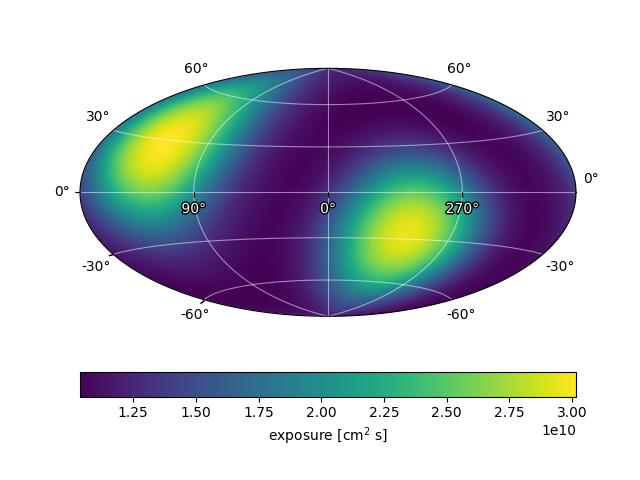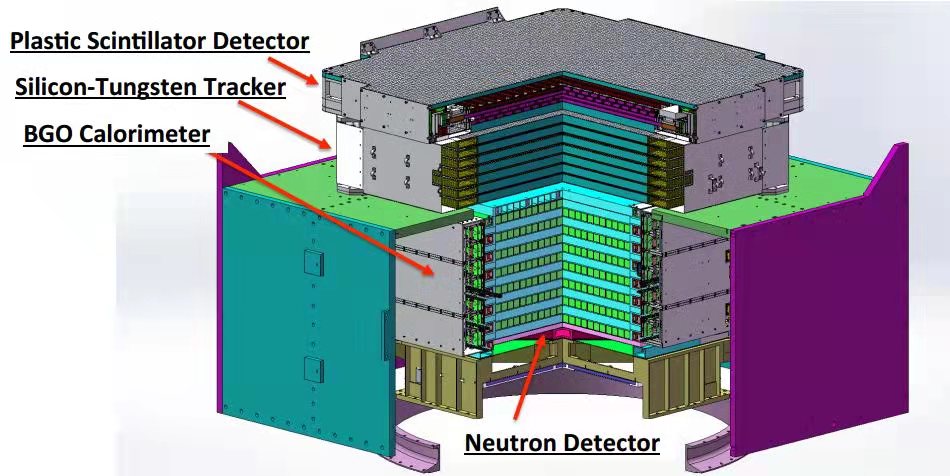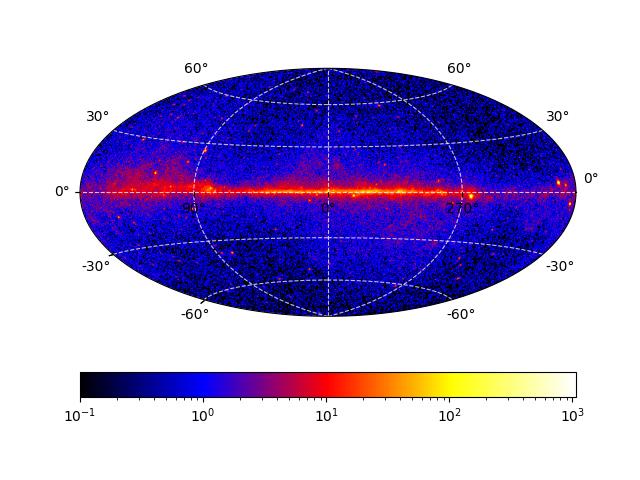The Public Release of the Dark Matter Particle Explorer Gamma-Ray Data

Fig. 1 The gamma-ray exposure map of DAMPE. (Image by DAMPE)
Strategic Priority Program in Space Science
With the adoption of China’s Innovation 2020 programme in 2010, the Strategic Priority Program I (SPP I) in Space Science was officially started on Jan. 11, 2011, aiming at dedicating to deepen our understanding of the universe and planet earth, seeking new discoveries and new breakthroughs in space science via the implementation of both independent and co-operational space science missions. The implementation of the SPP on space science will not only promote the development of China’s space science, of great significance to China’s status in international space community, but also turn a new page of Chinese space endeavor.
DAMPE satellite
DAMPE (also known as ‘Wukong’ in China), as one of the four scientific space science missions within the framework of the strategic priority science and technology projects in space science of the Chinese Academy of Sciences, was launched on Dec. 17, 2015 from the Jiuquan Satellite Launch Center. The main scientific objectives addressed by DAMPE include probing the dark matter via the detection of high-energy electrons/positrons and gamma rays, understanding the origin, acceleration and propagation of cosmic rays in the Milky Way, and studying the gamma-ray astronomy. During the 5.5 years of on-orbit operation, both the satellite and the payload work perfectly. So far DAMPE has surveyed the whole sky for over 11 times and obtained about 10.7 billion high-energy events. DAMPE has obtained the most accurate measurements of individual spectra of comic-ray electron/positron, proton and Helium above 1 TeV and made important contributions to the indirect detection of dark matter and the origin of cosmic rays.
DAMPE consists of 4 sub-detectors: the Plastic Scintillator strip Detector (PSD), the Silicon-Tungsten tracKer-converter (STK), the BGO imaging calorimeter and the NeUtron Detector (NUD). The PSD measures the particle charge and acts as an anti-coincidence detector. The STK converts the incident gamma-ray photons to electron/positron pairs and records their trajectories. The BGO measures the energies of incident particles and performs the electron/proton separation. The NUD further enhances the electron/proton identification by detecting the neutrons produced in the materials above.

Fig. 2 The structure of the DAMPE payload. (Image by DAMPE)
The gamma-ray observation
The dark matter indirect detection, the cosmic ray physics and the gamma-ray astronomy are the three major scientific objectives of DAMPE. And gamma-ray photons are of great importance for both the dark matter detection and gamma-ray astronomy.
Dark matter indirect detection) Photons are not deflected by the magnetic field in space and can trace the spatial distribution of dark matter, so it is possible to focus on the regions with high dark matter density. Thanks to the unprecedented high energy resolution of DAMPE, the photon data are well suitable for the search of gamma-ray lines which might be produced by dark matter annihilation or decay.
Gamma-ray Astronomy) The gamma-ray emissions from different types of celestial bodies have been detected and there are still plenty of sciences deserved to be studied. DAMPE has significantly identified more than 200 stable gamma-ray point sources in the photon data above 2 GeV including active galactic nuclei, pulsars, pulsar wind nebulas and supernova remnants. It can be useful in the studies of the violent physical processes behind activities of active galactic nuclei, the physics of pulsar emissions, and acceleration of cosmic rays in the supernova remnants. Furthermore, DAMPE has detected diffuse emissions such as the giant bubbles in the inner Galaxy and can be helpful to understand their origins. DAMPE can also provide independent observations of transients which enriches their multiwavelength data.
The data release
DAMPE gamma-ray scientific datasets consist of photon data and spacecraft files. The photon data are the photon events detected by DAMPE on orbit, which record the properties of gamma-ray events (the times of detection, reconstructed energies, directions, and the trigger types), and the good-time intervals (GTIs). The spacecraft files record the positions, velocities, pointings, and live times of the satellite within various time intervals. To facilitate the data analysis, the dedicated gamma-ray science toolkit DmpST is also publicly available.
The data published this time, including 99864 photon events and 1096 satellite status records, are achieved from Jan. 1, 2016 to Dec. 31, 2018. All of them can be accessed on the websites of the China's National Space Science Data Center (https://dampe.nssdc.ac.cn) or the Purple Mountain Observatory (http://dgdb.pmo.ac.cn/dampe/).

Fig. 3 All-sky gamma-ray counts map of DAMPE. (Image by DAMPE)
The China's National Space Science Data Center and the Purple Mountain Observatory will go on to release the gamma-ray data, update the data analysis toolkits, and provide the public with more diverse, refined and transparent data sharing and applications service in the future.